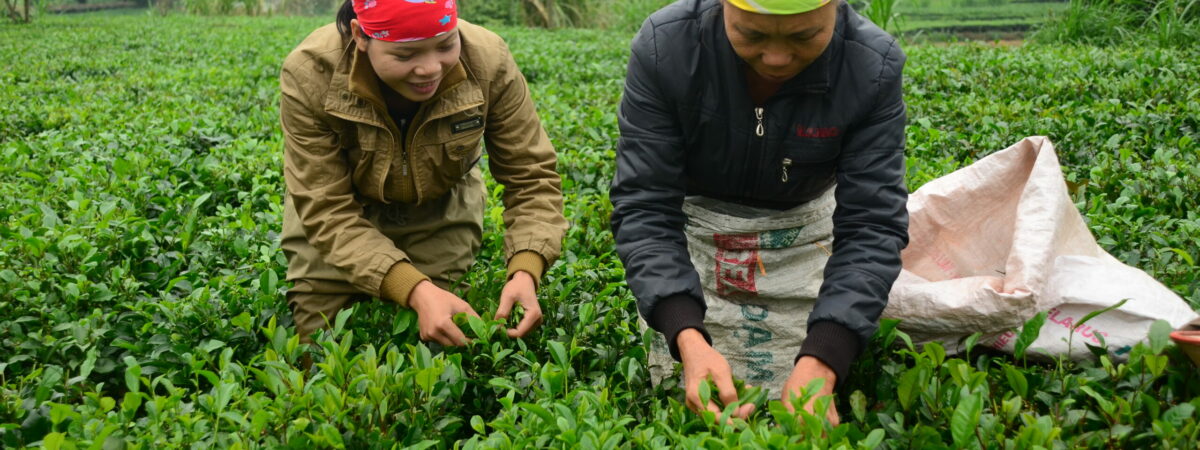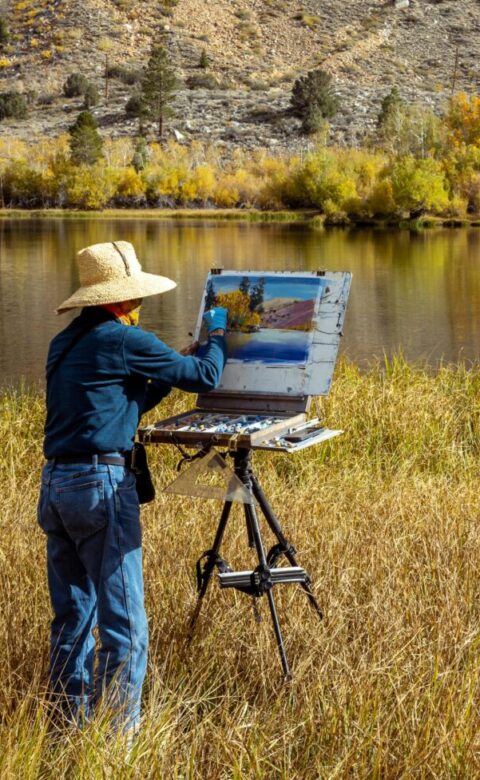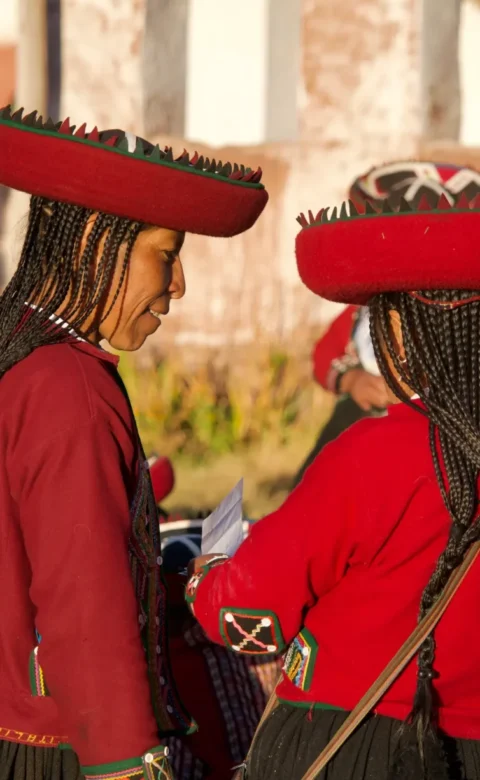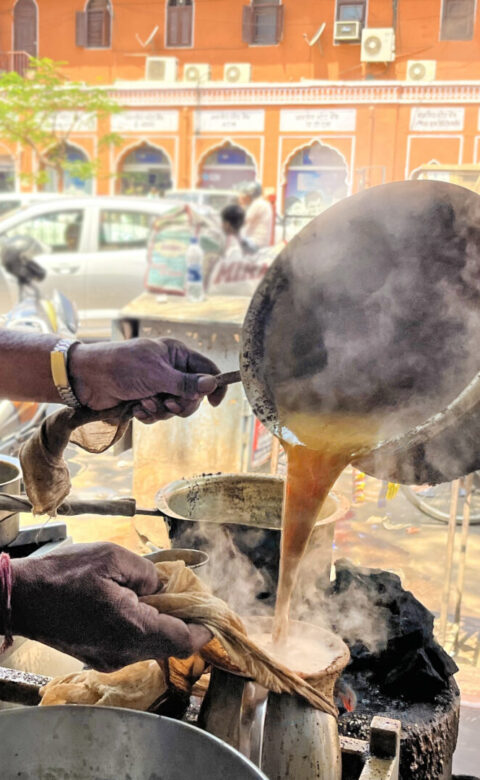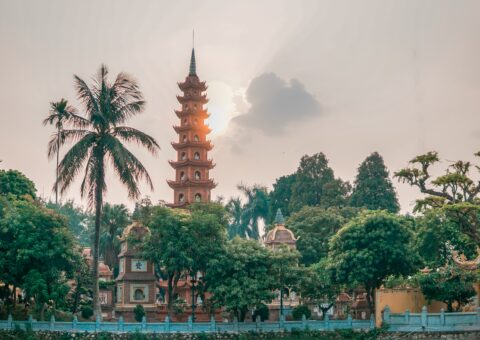In Vietnam, there are many small tea stalls on the street or at markets. These are the places where locals come once or twice per day for a cup and to talk with friends.
We have been growing tea in Vietnam for about 4,000 years. During our feudal dynasty, tea was used as a pure symbol for Buddhism. From the 13th to early 15th century, tea held a special philosophical value for royal officials and scholars. However, tea gradually took its own place as a way to connect ordinary people living in the cities and in the countryside.
The Vietnamese tea industry then underwent various transformations, and its development diversified. During French colonialism, tea plantations and factories were established to export tea to Europe. And during the American War, many tea gardens and factories were severely damaged, and our tea production was interrupted.
Then, with the help of the Soviet Union, many tea factories and farms were rebuilt. At that time, all tea products were exported to the Soviet Union. Later, during our “doi moi,” or renewal policy from the government, there were more economic sectors involved in tea production and trading.
Popular teas in Vietnam
There are many kinds and flavours of tea in Vietnam. We each have our favourite — and many of these come with a special story or memory for each of us.
Plain black tea: After being carefully picked, fresh tea buds and leaves will be dried naturally under the sun before wilting. Then we roast the buds and leaves in a pan with a fixed temperature until the buds begin to curl and desiccate. The green color now turns black. This sounds simple, but it is actually a complicated process that depends on the worker’s experience to achieve the expected quality.
We also favour lighter teas with flower fragrances such as lotus or jasmine tea.
Lotus tea: High-quality black tea leaves are placed within lotus flowers for a day to acquire the scent. Then the tea leaves are removed and packaged. Lotus tea is often reserved for special events and as gifts.
Green tea (or fresh leaves tea): This is the most popular, affordable, and easy option among Vietnamese people. I remember my grandmother often picked raw leaves directly from the tea tree in our garden — or she bought it at the local market early in the morning. Later in the morning, we already had some good green tea ready to make a drink for the whole day for our family or to share with neighbours.
Later, we created many new tea types, such as kumquat tea, lemon tea, peach tea, or even milk tea. Many young Vietnamese do not like the bitter taste of the original tea, and these new and creative versions are becoming trendy in our culture.
Preparing for teatime
Drinking tea with a neighbour or a friend is not just about a drink; it’s about sharing our lives and opening our hearts, sharing our feelings, speaking about the family, and talking about society. All these sensations come from savouring a cup of tea.
But, more than that, tea is also considered delicate and meaningful. Tea is used for poetic and literary inspiration and for the appreciation of nature, such as watching the moon.
My grandparents often enjoyed tea under the shade of our trees in front of our house when the weather was good. Sometimes they drank it inside, right in front of our ancestors’ altar. To make a good tea — I still remember from my childhood — it takes quite a few steps. I often had to boil the water right as soon as we had guests visiting or it was family teatime.
According to our tradition, Vietnamese tea should be made with rainwater. Tap water is okay, but it is not as good for quality tea. When all is ready, we boil the water at a proper level, heat the tea set, wake up the tea, and fill the teapot with water and wait. This process needs patience and attention.
When serving, teacups should be put in a circle and tea poured so it is delivered equally.
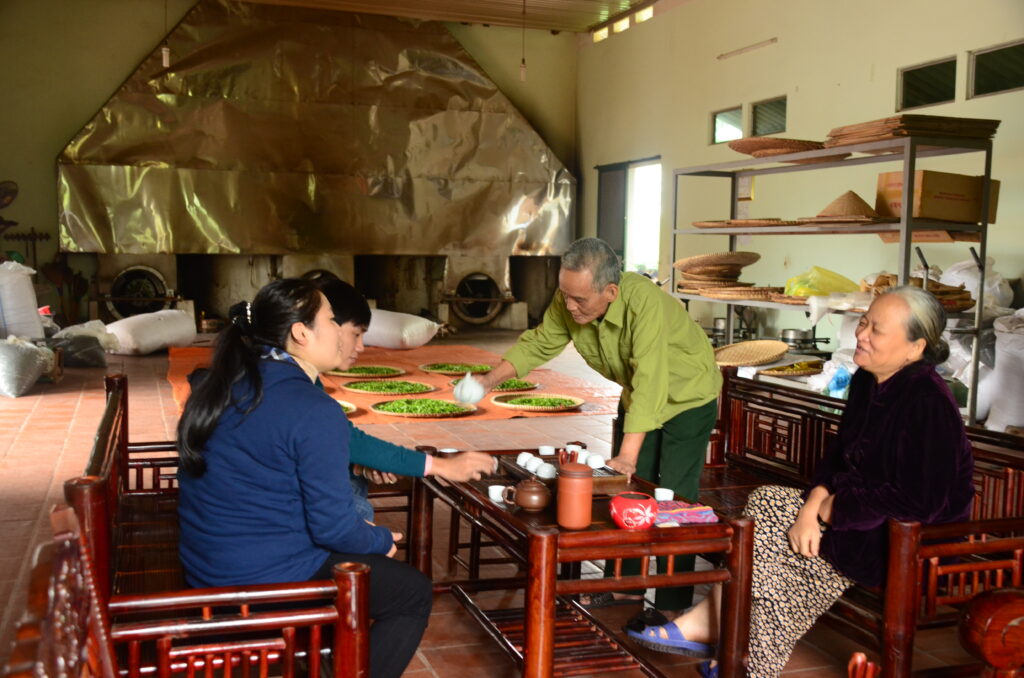
Tea is not just a drink; it is an herbal medicine
Green tea has been shown to improve blood flow and lower cholesterol. Many studies have found that green tea helps prevent a range of heart-related issues, from high blood pressure to congestive heart failure.
Additionally, we often use tea to clean the bodies of infants or small kids. We believe tea is good for sensitive skin and helps treat heat rash. You may be surprised to know that we even use tea to embalm bodies. This helps keep the body in place as it decomposes.
These days, tea is also used as a cooking ingredient. Chefs use tea leaves to remove smells of fish and eggs, for instance. Tea powder is often used to give a unique flavour to cakes, ice cream, and other dishes.
Tea as a meaningful gift
Tea’s importance to Vietnamese culture is quite evident — from weddings to anniversaries and ritual ceremonies. On our lunar new year (called Tet), tea is the first option for preparing gifts for family, friends, or business partners. It is a must-have item on the ancestral altar during the Tet holiday.
You can easily find tea as an obligatory possession at Vietnamese weddings and even in daily life. People may carefully choose premium teas as a gift to express deep appreciation.
Enjoy Vietnamese tea during your visit
When you visit us, you will be offered tea almost every day and everywhere you visit. If you want to dive deeper into this part of our culture, take an extra day or two to visit the beautiful tea plantations. Here, you can talk to farmers and learn about growing methods and how they collect and dry the plants.
Most importantly, you’ll learn to enjoy the moments of drinking tea and the stories that accompany them. This will certainly be a highlight of your visit to Vietnam.

